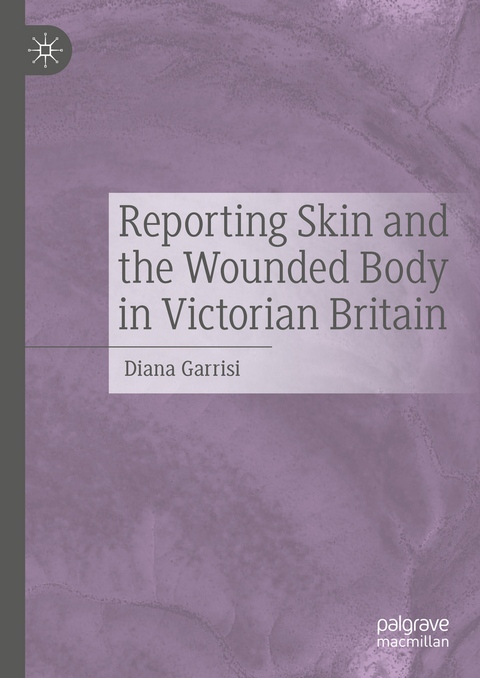
Reporting Skin and the Wounded Body in Victorian Britain
Springer International Publishing (Verlag)
978-3-031-75367-1 (ISBN)
- Noch nicht erschienen - erscheint am 27.12.2024
- Versandkostenfrei innerhalb Deutschlands
- Auch auf Rechnung
- Verfügbarkeit in der Filiale vor Ort prüfen
- Artikel merken
Drawing on a wide range of primary sources, this book explains what made skin newsworthy in Victorian Britain. It represents a unique contribution to the media history of the human body by delving into the cultural and historical underpinnings of wound representation in Western culture. Employing a case study approach, the book provides a comprehensive exploration of the interplay between dermatology and the Victorian press. This work suggests that there was a mutually constitutive relationship between skin reporting and the formal evolution of news discourse during the nineteenth century. Narratives related to skin, such as wounds caused by corporal punishment, plagues resulting from neglect in workhouses, and occupational skin diseases, emerged as defining features of Victorian newspapers. Notably, media coverage of wounded skin assumed a central rhetorical position in debates pertaining to discipline, abuse, poverty, labour, and social norms, a legacy still discernible in contemporary journalism. Analysing the mediation of the wounded body in Victorian Britain offers a unique insight into the foundations of modern journalism. It sheds light on the impossibility of maintaining an objective framework when observing and reporting on bodies in pain. Paradoxically, news writers and commentators of that era navigated this challenge by encapsulating such narratives within rhetorical constructs that provided a template for the evolution of contemporary news values.
Diana Garrisi is a lecturer in journalism at the School of Journalism, Media and Culture (JOMEC), Cardiff University. She is co-editor of Disability, Media and Representations: Other Bodies (2020) and Journalism Pedagogy in Transitional Countries (2022). In 2015, she received the Samuel J. Zakon Award in the History of Dermatology.
Chapter 1: Dermatology and the Making of News in Victorian Britain.- Chapter 2: Skin as a Medium: Historical and Cultural Perspectives.- Chapter 3: Skin as Antithesis: The Lure of Newspapers for Opposites.- Chapter 4: Skin as Forensic Evidence: The Times Coverage of the Flogging of Private White.- Chapter 5: Skin in Pieces: the Fragment as a Narrative Device.- Chapter 6: Skin as an Epistemic Tool: Wound Care and Social Reform.- Chapter 7: The Body as Utensil: Framing Occupational Skin Diseases.- Chapter 8: Skin as a Canvas: The Origins of Facial Disfigurement.- Chapter 9: Media Histories of Skin.
| Erscheint lt. Verlag | 27.12.2024 |
|---|---|
| Zusatzinfo | XIII, 198 p. 12 illus., 1 illus. in color. |
| Verlagsort | Cham |
| Sprache | englisch |
| Maße | 148 x 210 mm |
| Themenwelt | Geisteswissenschaften ► Geschichte ► Regional- / Ländergeschichte |
| Sozialwissenschaften ► Kommunikation / Medien ► Journalistik | |
| Sozialwissenschaften ► Kommunikation / Medien ► Medienwissenschaft | |
| Schlagworte | Journalism History • medical journalism • punishment • Science Journalism • Skin • social reform • Victorian Britain • Victorian newspaper • wounded body |
| ISBN-10 | 3-031-75367-4 / 3031753674 |
| ISBN-13 | 978-3-031-75367-1 / 9783031753671 |
| Zustand | Neuware |
| Haben Sie eine Frage zum Produkt? |
aus dem Bereich


